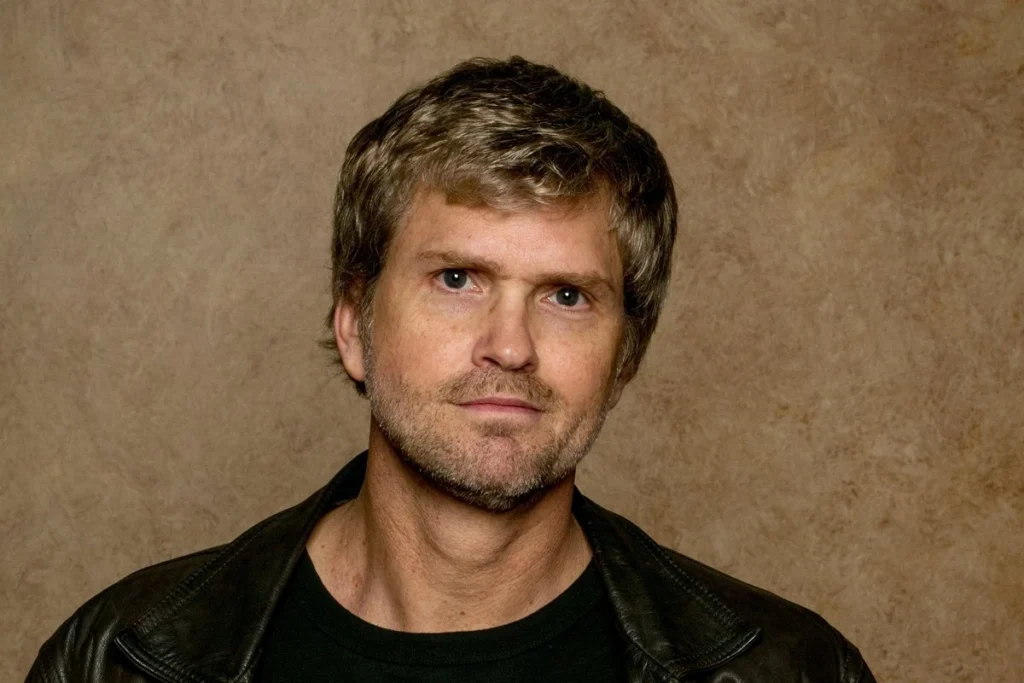“Mad genius.” “Genius, plain and simple.” “A game-changer.” “Vocal and choral innovator.” “Out of control.” These are just a few of the terms people use when talking about Roger Treece. A mastermind behind many projects, including VOCAbuLarieS with Bobby McFerrin, a “unique masterpiece of brilliant and unprecedented choral timbres and sounds”, “setting new standards for choral recordings”, “the future of choral music.” His revolutionary music teaching method, Musical Fluency, equally accessible to both singers and instrumentalists, is considered to be a watershed in music education theory and practice.
A composer, an arranger, a producer and a singer, a choir director, a teacher – these are just some of your roles I suppose. How do you see yourself? I see myself as all of these, and I enjoy all these roles, but I’m primarily a “musical architect”. What fascinates me the most is how the musical elements come together to make music so beautiful and meaningful to us. See, some people are fascinated by a musician’s performance. Some people want to tell stories, and other people want to make them. I enjoy both, but I’m most fascinated by the making of the story. I like conducting my own music the most because I enjoy directing the drama of the story.
You’ve produced or arranged compositions for over 50 albums, spanning a wide range of artists and styles, from Andrew Lloyd Webber, Josh Groban, Bobby McFerrin, The Manhattan Transfer, the Chicago Symphony Orchestra, The Danish radio Symphony and Choir, the King’s Singers, Barry Manilow, rapper Z-Trip, composing music for Microsoft and even McDonalds. How have you developed the skills to cover such a variety of work? I think it’s a combination of skills that come together: writing, orchestrating, recording, and producing. I started writing music when I was really young. At first, I just played things on the piano because I didn’t know how to write them, and then I went to high school and learned how to write. Then I went to college, University of Northern Colorado, and took composition lessons and studied the great composers and arranged pieces for the school jazz ensembles all the time. More than my homework!
What I learned was how to put music together; like how you learn to put boards together to make something stand up. I took some orchestration lessons from one of the best orchestrators ever, an Englishman named Jeremy Lubbock. I brought him a manuscript, it was my first lesson, and he looked at it and just started shaking his head going, “Oh no!” I thought, this is a disaster, right? He started writing things, erasing and writing other things and said: “Listen, you just need to practice writing with four instruments. If you can’t make music with four voices, then you are in the wrong business.” So it really is about architecture, i.e. what helps the musical ideas stand up.
Also, in the early 90s and the late 80s, music technology was exploding with synthesizers and home recording equipment, so I started buying it right away. I got my first equipment in, I don’t know, maybe in 1987 or 1988, and I have had some kind of music studio in my house ever since.
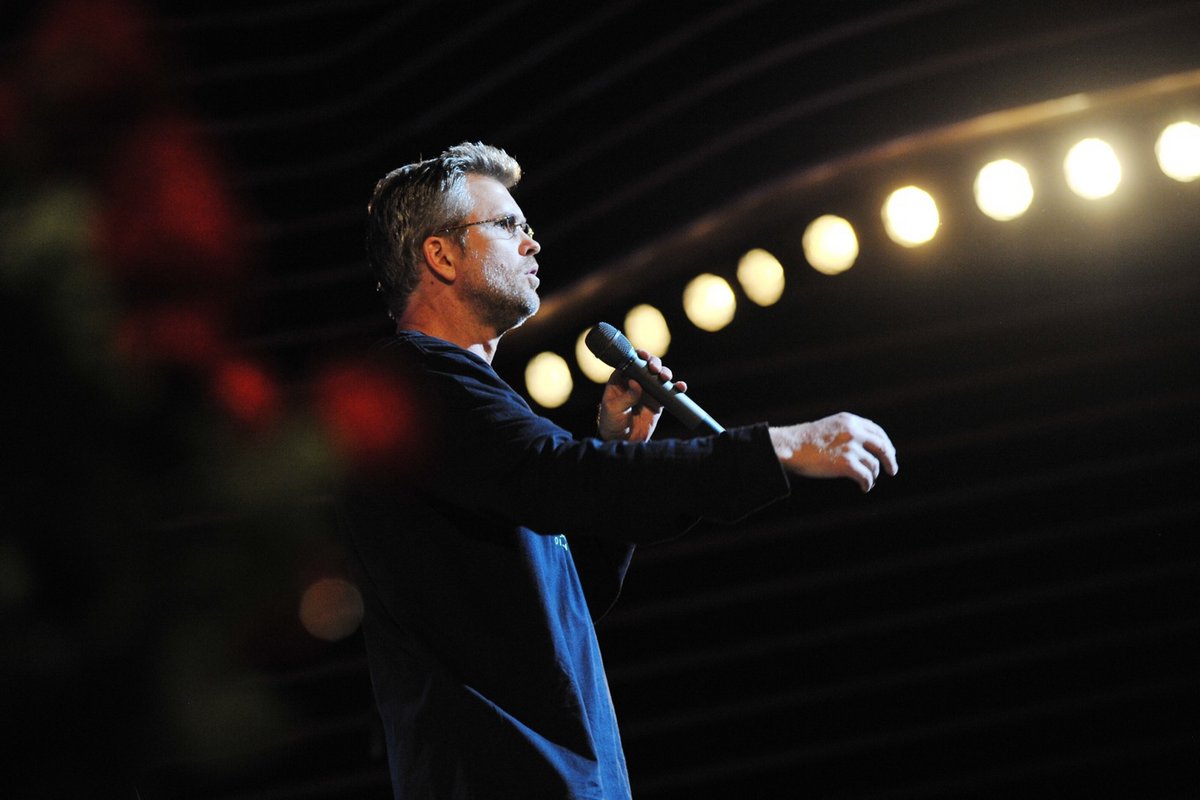
Along the way, I learned to record and to “produce” people in the studio. That means to be in charge of the recording session, coaching the artists in their performances. It’s kind of like being a coach of a football team in a game. I also learned to write and produce commercials before I did any records. Commercials are miniature albums! I find it interesting that the guy who produced Ace Ventura Pet Detective was a TV Commercial producer, and that film was his first feature-length film. He used the same skills to make a movie! So all those skills coming together is what helped me to work with these different artists.
There are different kinds of producers. I’m the kind of producer who is very involved with the artist on a creative, collaborative level. In other words, I’m writing music, with them or for them, both as an arranger and as a composer, so I can build the right house for their music to live in.
Your work really spans such a variety of genres and styles, your work encompasses jazz, classical, pop and rock music, being on stage or in studio with some of the world’s most popular artists. What do you especially like about all these different types of collaboration? It’s fun to get an idea – to have a germ of a musical idea – and then work on it and expand it – grow it – to become a piece of music. Then, when somebody else records it, it brings a whole new dimension of life to it, and that’s a fun process. At the same time, it is a difficult process. It requires a lot of tenacity, a lot of hard work. A lot of patience. But it’s very rewarding.
Over the last decade you have developed a music practice method called Musical Fluency. What is it based on? I guess it’s based on how I came to see music as a language. And I don’t really mean that metaphorically. I know that music does work, metaphorically, as a language, because it speaks to anyone in any part of the world. That’s true. By the way, it’s a really interesting thing about what we call musical “languages”, i.e. plural. I don’t think we have different musical languages, but we DO have different dialects of the same language. I mean, everywhere in the world, music is organized in roughly the same way. For example, it’s organized primarily by harmony, by melodic shape, and by rhythmic patterns in time. But, as far as verbal language goes, we DO have different languages, because different languages are organized on different principles. For example, Chinese and English are different languages. They have completely different forms of representing the abstract. But there is only one musical language on the planet as far as I can tell. There are, however, many different dialects.
But somewhere along the line we began to see music differently than how the people who first started making music saw music. At first, music was extemporaneous, and slowly it evolved into – primarily – a written and practiced art form. In addition, we see performance and composition as different disciplines, and regard composers as “creative.” But we don’t do that with verbal language! For example, if somebody writes an email, you don’t say, “Wow, you’re really creative!”, because we all write emails, I mean, especially in our native language, right? But if somebody writes a piece of music, you attribute it to some level of artistic talent, or maybe even “genius.” But that’s not necessarily accurate, because music can be learned, just like a language can be learned. As a matter of fact, learning a language is much more difficult than learning music.
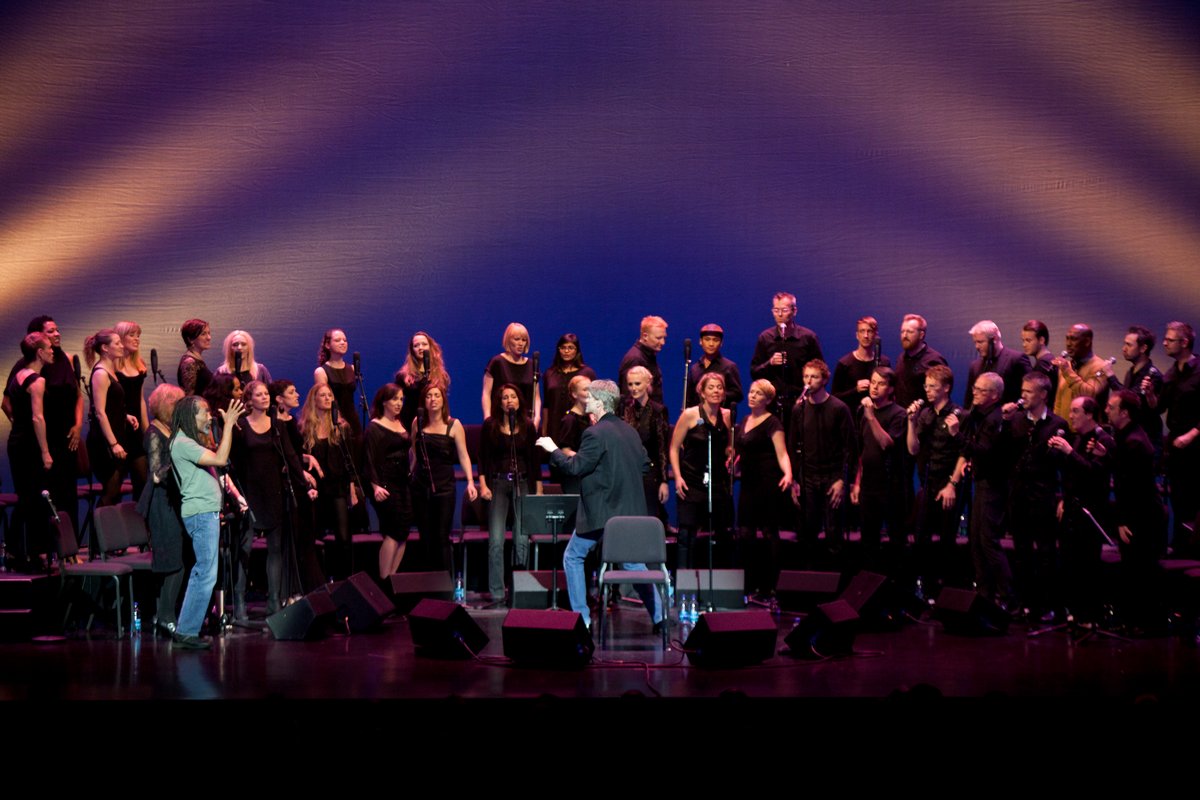
Do you really believe that anyone can learn and become musically fluent? That anyone can develop the ability to express oneself through music? Yes, essentially. I mean, if we taught music to everybody the same way we teach language, then everybody would be writing music as easily as they write an email. Our view of creativity would be different. Not all of us would become great composers, but we would all be fluent in the musical language just like we are with verbal language. Not everybody’s going to become a poet or a famous author, either, but we can all write love letters and birthday cards and emails and job applications, right?
How does understanding music as a language change your approach to musical fluency? Well, let’s start by talking about some linguistic terminology, and then compare how this terminology is used in verbal language and music language. Let’s look at the words “expression” and “recitation.” I want to explore the definition of these words for the sake of clarity in our discussion about musical fluency.
Let’s say “expression” is the real-time communication of one’s thoughts. So right now, when you and I are having a conversation, we’re each expressing. I think of something and I say it, and then you think of something and you say it. That’s what we do with language. We talk, we express ourselves. Let’s say “recitation” is when we express thoughts that have been written beforehand and then rehearsed and performed. We recite a poem or a speech, or actors recite from a script, usually composed by another person. Recitation means that what is being said is not extemporaneous. Now let’s see how these two words are used in music and in speech. When we use the word “expression” – or “express” – in a musical context, we mean that a musician is playing a musical passage dramatically or passionately. We say, “She’s playing Beethoven with such expression!” We don’t mean that she’s making up the music on the spot. We’re instead referring to the manner in which she’s reciting the music.
Notice that we don’t use the word “recitation” in music at all (except in operatic forms), even though it’s the same process that we have in speech. Instead, in music, we use words like, “play” or “perform” or “sing.” Even though a performer is reciting the music, like an actor would recite lines from a play, we don’t call it recitation. This is because recitation has become the primary mode of musical expression, and, therefore, we view it as the natural state of musical performance. In other words, recitation is the dominant paradigm of our musical experience, so we don’t make up a special word for it. Well then, what do we call it when someone is playing or singing their own thoughts? Well, we’ve invented a special word for THAT! Improvisation.
Notice that what has happened is that we’ve taken the natural, original, mode of musical expression – playing extemporaneously – and we’ve set it aside as a special skill for specialized musicians. It’s something that only jazz people do, or something that only really talented people do. Also notice that we don’t use “improvisation” when we refer to someone who’s talking. You never say, “Let’s have coffee and improvise some speech together.” Why not, because TALKING is the natural mode of linguistic expression. We call the natural, original, mode of verbal expression “talking.” But we call the natural and original mode of musical expression “improvisation.” Why do we use different words? Because the predominant form of musical expression is recitation from the page.
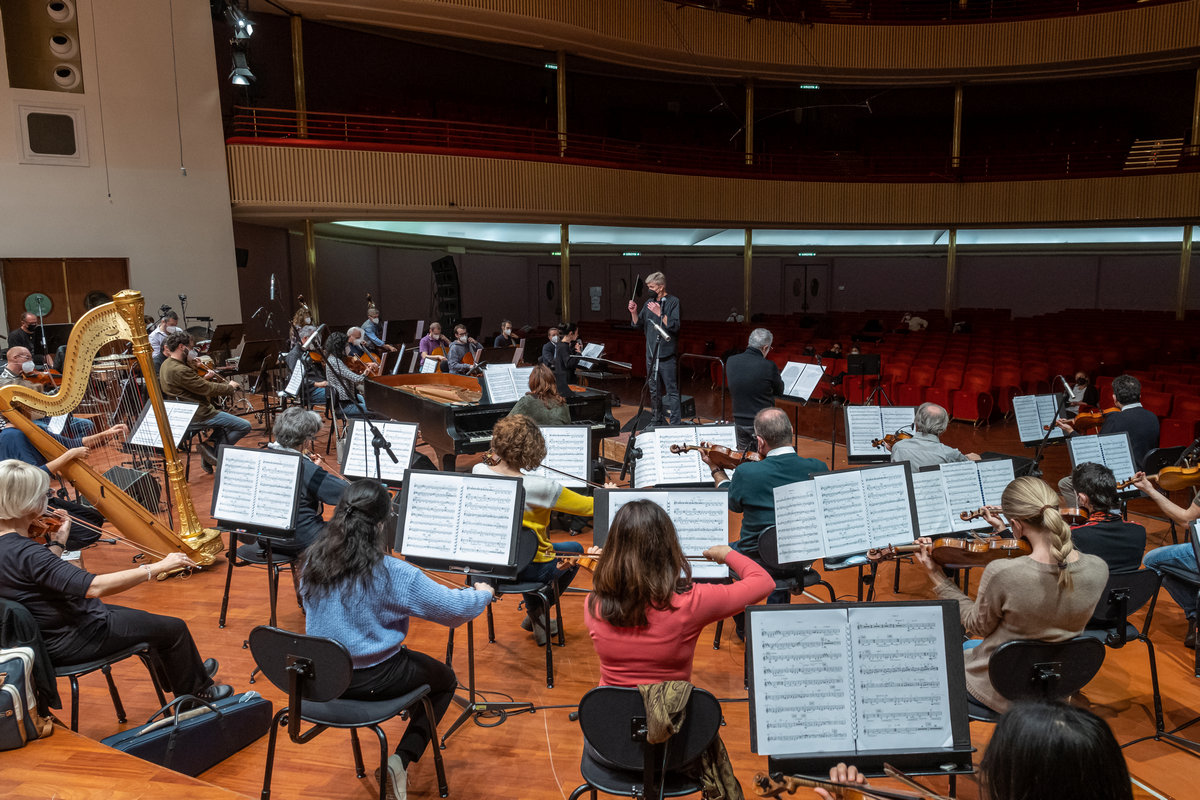
What exactly changed your perspective? One of the first times I started thinking about the difference between the musically fluent view and the traditional music view was at a choral festival in Poland. I was there with Bobby McFerrin performing VOCAbuLarieS, and we had done a concert with Proforma, a wonderful Polish choir. After the gig, we were eating in a big banquet room at a restaurant, and sharing the room with us was another choir from South Korea and I had not been able to see them. So I went to the conductor and said, “I didn’t get to hear your choir today. Would they be able to sing for us?” And he said, “No, I’m sorry. I didn’t bring my scores.” Now, of course, I understood. But … I found it interesting that a group of 30 trained musicians couldn’t make any music without a score.
After that I had a dream. I dreamt that I was backstage after a theater performance of Anthony Hopkins. I went up to meet him and started talking to him, but he couldn’t respond. It was like he was having difficulty talking to me. Then he reached for his script and began reading it to me. See? Now, with the script, he could talk. I wrote CircleSongs: A Method for Developing Musical Fluency a few years after that, and then, in 2020, I wrote Musical Fluency: A Practice in the Formation and Expression of Musical Thought.
I want to clarify one thing: the written page in any genre is a wonderful thing! Whether it’s a symphony or a feature film or a book, written stories bring us the profound narratives and lessons of our shared humanity. But we should be able to talk and sing and play without them!
I’ve heard you saying you don’t like the word “improvisation”. Why? I would say that many of us see you as one of “the fathers” of vocal choir improvisation. Well, thank you. “Improvisation” is a good word, but I say that I don’t like it because it misdirects our minds. It makes people assume that making music without paper – improvising – is a special skill, when, if you think about it historically, it’s the first, most natural musical skill. We don’t know what the first human music sounded like, but we all know that it wasn’t written!
As I said, the dominant paradigm of musical experience is recitation. I think it should be the other way around; expression (or improvisation) should be what we learn first. If we think about verbal language, we know that there’s nothing more important than a person expressing their thoughts. It’s fundamental to our human condition. Think about it. Which is more sacred: to express myself now with you and to be honest and sincere and accountable for what I say, or to simply say what somebody else has already said? I think the same is true for music. But yet we don’t teach it. So in Musical Fluency, I teach people how to build musical sentences. I teach them the grammar, syntax and vocabulary of the musical language.
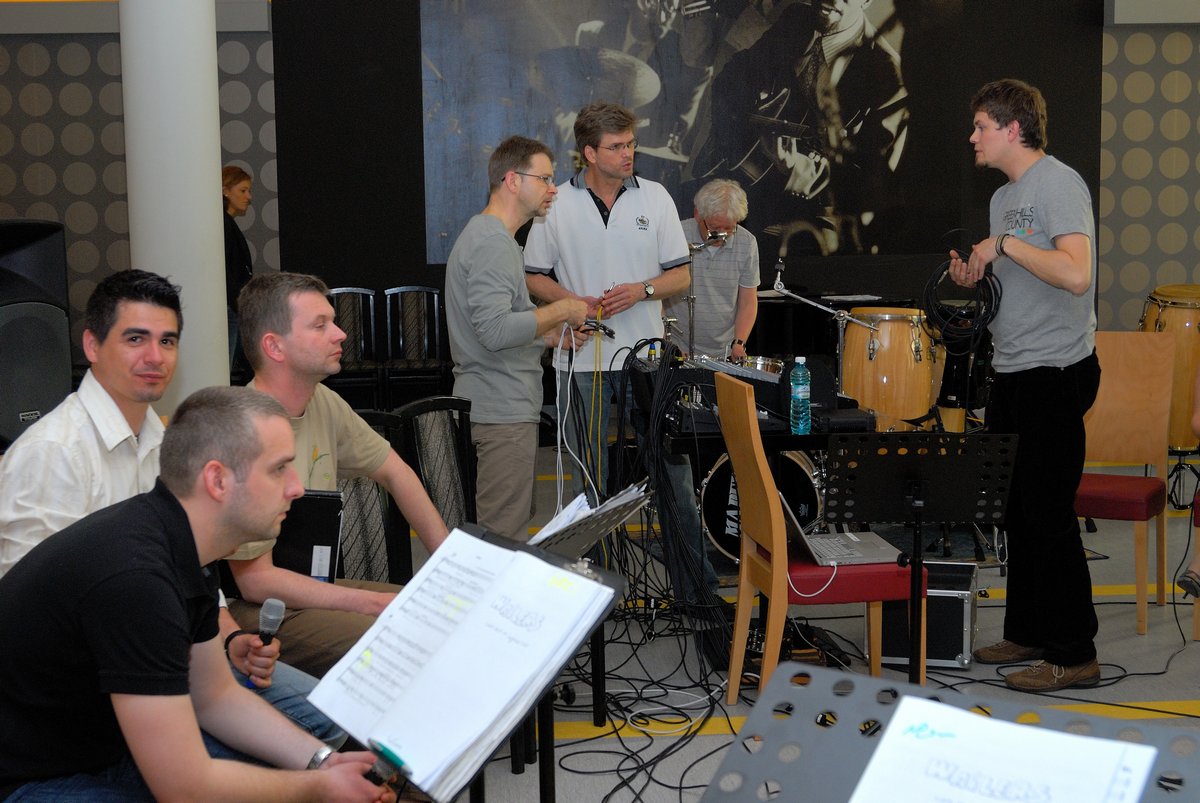
So should schools have more of this “real-time music communication”? Instead of reciting, should they rather focus on developing the ability of people to express musically? According to you, that won’t happen unless we develop our musical fluency. First, I admire and support music teachers! I’m one myself! I also believe it’s important – absolutely fundamental – to learn how to read and perform music. That shouldn’t change! I’d just like to see the music teachers of the world figure out how to teach young musicians to play music without the page. Of course, jazz curricula teach improvisation, but they are front-loaded with complex harmonic and rhythmic theory. But I don’t believe that’s the only way. As Schoenberg said, “There’s still a lot of great music to be written in C Major.” In other words, we can teach people a lot about musical improv before we have to go anywhere near the complexity of jazz.
Well, it still seems that mostly recitation is at the heart of music teaching. Recitation is good. Because it places the brilliance of someone else’s mind into your own mind. I mean, I would never think of what Mozart or Bartók thought of, so I need to play those guys, because that’s how I get their thinking into my head. Just like by reading Homer or the Bible, I’ve got those thoughts in me now, OK? This is very important. But I’m going to be incomplete if I can’t somehow integrate that into my own thinking and have it come out in an expressive way in real time thought.
Josquin des Prez, Palestrina, Bach, Mozart, Beethoven, Brahms, Dvořák, etc., started writing the musical language for us, and it continues to evolve today. So we really DO have a solid grammatical practice of the musical language. There IS syntax (just think about chord progression), there is vocabulary, there are all sorts of things that make it a very understandable, regular and accessible thing. And that’s what we’re learning in Musical fluency, right? And that’s what anybody can learn.
In your book on musical fluency, you say: “Musical creativity is not so much a miracle as it is a practice.” People often think that creativity is connected with intuition and musical creativity with intuitive spontaneous improvisation. In your book you say “it is a product of millions of threads of integrated knowledge and experience.” How do you think this knowledge and experience should be developed in our lives as musicians? We should learn and practice the musical language just like we learn and practice verbal language. That’s the short answer. To elaborate a little bit, let me begin by saying that I believe that we’ve mischaracterized the nature of creativity in the arts. What we call “creativity” in music is two things: an intuitive, inspired, spontaneous gesture and/or a deliberate, thoughtful construction of musical elements, and the latter occurs much more than the former. Thomas Edison was correct when he said, “Genius is 1% inspiration and 99% perspiration.” People who create anything experience both processes. Chopin, talking about an Impromptu, said, “A perfect impromptu should seem (italics added) spontaneous and free. No one should be able to guess at all the desperate calculation behind it.”
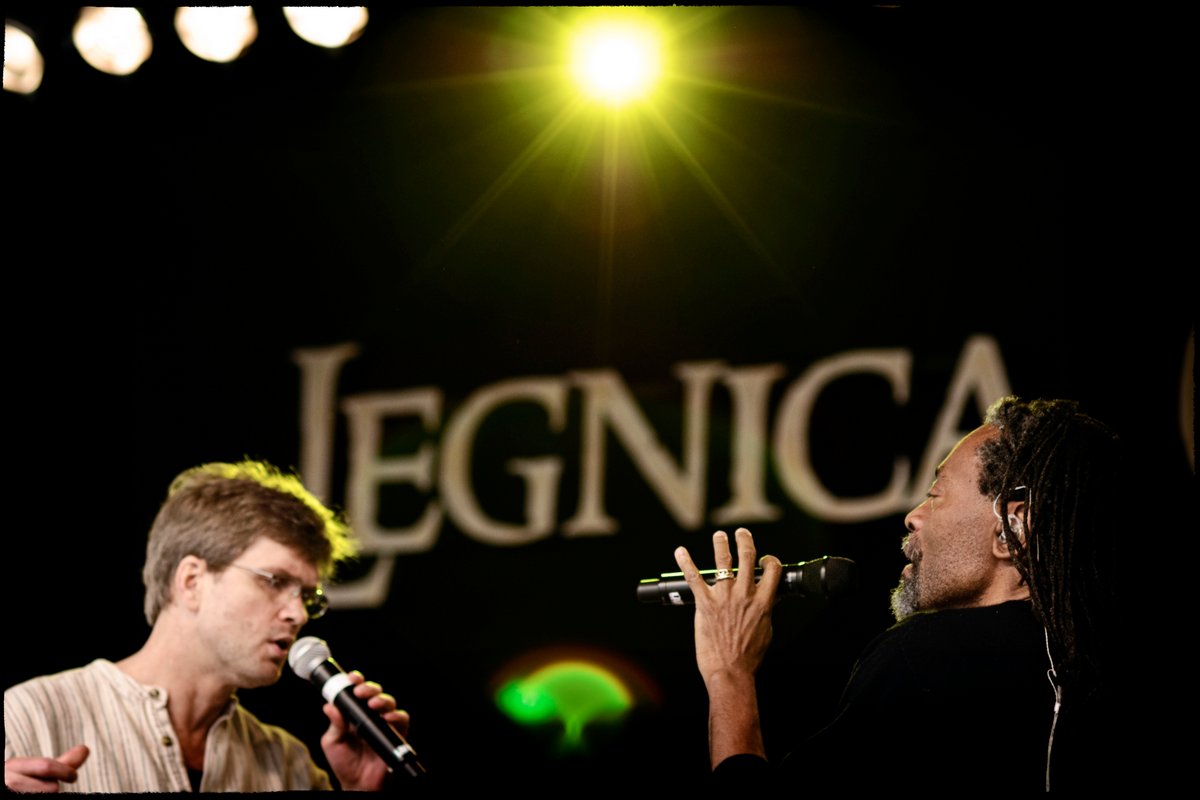
So what he’s saying is there’s deliberate thought involved in creating music. It’s not just spontaneous genius spilling out, though sometimes it is. The musical language is learnable, and if we learned it, we’d start “speaking” it. Just look at children: before they ever go to school, they’re talking a mile a minute. I also believe that if we taught the musical language, we wouldn’t need “improv” workshops … or else, they would be different. Instead of just getting people to sing, we’d be teaching them how to develop musical thoughts. In workshops and Musical Fluency classes I’ve had a lot of trained musicians – some with PhDs – who have a difficult time singing anything that’s not written out. If we trained them to “speak” the musical language as young people, they’d be used to it just as they are to their native language. Remember when you were learning English, and your teacher taught you how to pronounce English words? We have to do the same thing with music. Our freedom to express ourselves in the musical language comes from our practiced ability. We can’t merely have students look at a page and say, “That’s an inversion of the previous melodic shape.” That’s not enough. No, you gotta sing it. You gotta learn how to pronounce the word. It’s got to be in your lungs and your voice as well. So what I’m saying is that “creative musical motions can be systematically practiced until they become the language of our spontaneous expression”, as I say in my book.
How would you describe what exactly circle singing is? How did you come across this form of creating music? Circle singing is a group improvisational form. Somebody steps out and takes the lead momentarily, and they create a repetitive motif and teach it to a few people in the group. As that group sings and repeats the motif, the leader creates another motif to go with the first, and so on. To quote my book:
In CircleSinging, musical ideas are created and layered, one at a time, using a repetitive cycle to help members of an ensemble perceive each idea as it is improvised, and understand how to respond, before adding and organizing other ideas around it. Each new musical idea is created and refined in real time before moving on to the next.
Would you call this motif ostinato? Is there a difference? I wouldn’t necessarily say ostinato because that implies something very rhythmic and maybe even kind of percussive. So I would just say a “repetitive motif.” I would shy away from the word melody, because melody implies something longer. For beginners, circle singing works best when the repetitive cycle is shorter, like two to four measures. CircleSongs are fun to create, fun to sing. And they build skill, because the process involves listening, singing, rhythm, you know, because the music is being made organically in the moment. And there’s no conductor directing the tempo. The tempo and dynamics are organic, expressed by the group. It’s like a farm Co-op. Everyone tills the ground and grows the vegetables and they make it work right. That’s what I mean by organic. Without a leader, the musical ideas themselves have to be clear and singable. They have to stand up by themselves. For example, the Ode To Joy is a clear, singable melody that stands up by itself. Virtually anyone of any age anywhere in the world can sing that melody.
I learned this from Bobby. Before I worked with Bobby, I had never done circle singing. When I first tried it, my ideas were too complicated and they didn’t hold up well. I did not understand the simple architecture required for good rhythmic and melodic counterpoint. And I’m not talking about the Bach kind of counterpoint. I’m referring to how two independent lines complement each together and yet remain individual so that the ear can discern both. That’s good counterpoint.
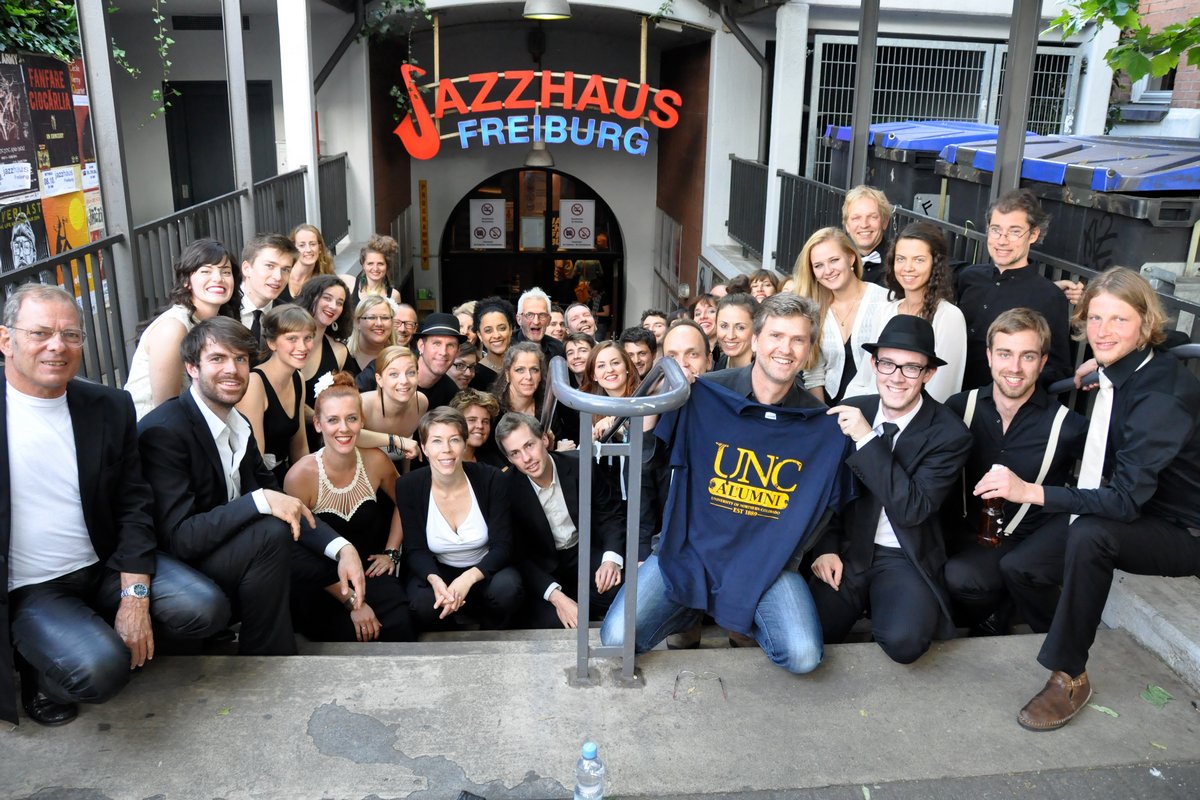
What do you call what people do with the lines? Would you use the word like inter-laying? Yes, that’s what I mean. They interweave. They interlock. Complicated or over-syncopated ideas usually don’t work. Each idea has to have enough space in it to leave room for the other idea to live. I observed Bobby over the years working with choirs and I noticed how simple and fun his ideas were. They didn’t require a great deal of energy and concentration or skill to sing. It’s like riding a bike: if you’re on level ground, it doesn’t take very much energy to just keep the bike going. That’s like a good musical idea. You don’t need a lot of notes; just the right ones.
I’m sure readers would like to hear more about your cooperation with Bobby McFerrin, and especially the formation of VOCAbuLarieS. As we have already mentioned, this album is considered to be groundbreaking, setting new standards for choral music of the 21st century. It was created in collaboration with you as the composer, arranger and producer. Can you explain in more detail how this unique recording came about? So the short story is that his manager Linda Goldstein realized that, even though Bobby was a singer of immense popularity and value, he had no footprint in the world of choral music. Choral singers all around the world loved him, but there was no Bobby McFerrin music for the choral world to sing. So Linda started asking different choral arrangers to arrange Bobby’s music, so that choral groups could sing it. After a couple of years of looking for people, she finally chose me.
As far as collaboration goes, we didn’t have a traditional collaboration, like where two people are in the same room working on the music together. Our collaboration was more of what I call a “passive collaboration.” I took some of his older songs that had 24 to 32 measure forms and developed them into compositions that were 10 minutes long, with additional themes, melodies, and choruses. In some cases, I created compositions using motifs that were only one or two measures long. Our collaboration was similar to Bartók re-creating old Hungarian folk melodies into new compositions.
There was one instance when we were in the room together at the same time actually working on something, and that was when we were writing the lyrics for Say Ladeo. It was Bobby, Donny Rosler and myself. Linda locked us in my studio and said: “You guys stay in here until you come out with the lyrics for this song!” Because we already had four drafts of lyrics for that song and none of them were yet good enough.
So how was the music for VOCAbuLarieS created if it wasn’t collaborative? It was me in my studio in New York, working in solitude for a number of years, writing that music. Then I’d arrange the songs for the singers and for Bobby and record demos to try them out. Then I’d make revisions, and then bring in singers one at a time and record the final versions.
One at a time? How many singers were there? Well, you know, there were about 60 singers on the record. Not every song had 60 singers. Each song had an average of 15–20 singers. I wanted to record it one singer at a time and layer tracks to get it perfect, so that the expression of every nuance of the phrase was exact. And then I’d bring in another singer to follow that track. In that way it took several years to record this album. Now, this wasn’t 40 hours a week full time because I was also on the road with Bobby, doing concerts, and there were other things to do, so it took several years to get every track recorded and edited.
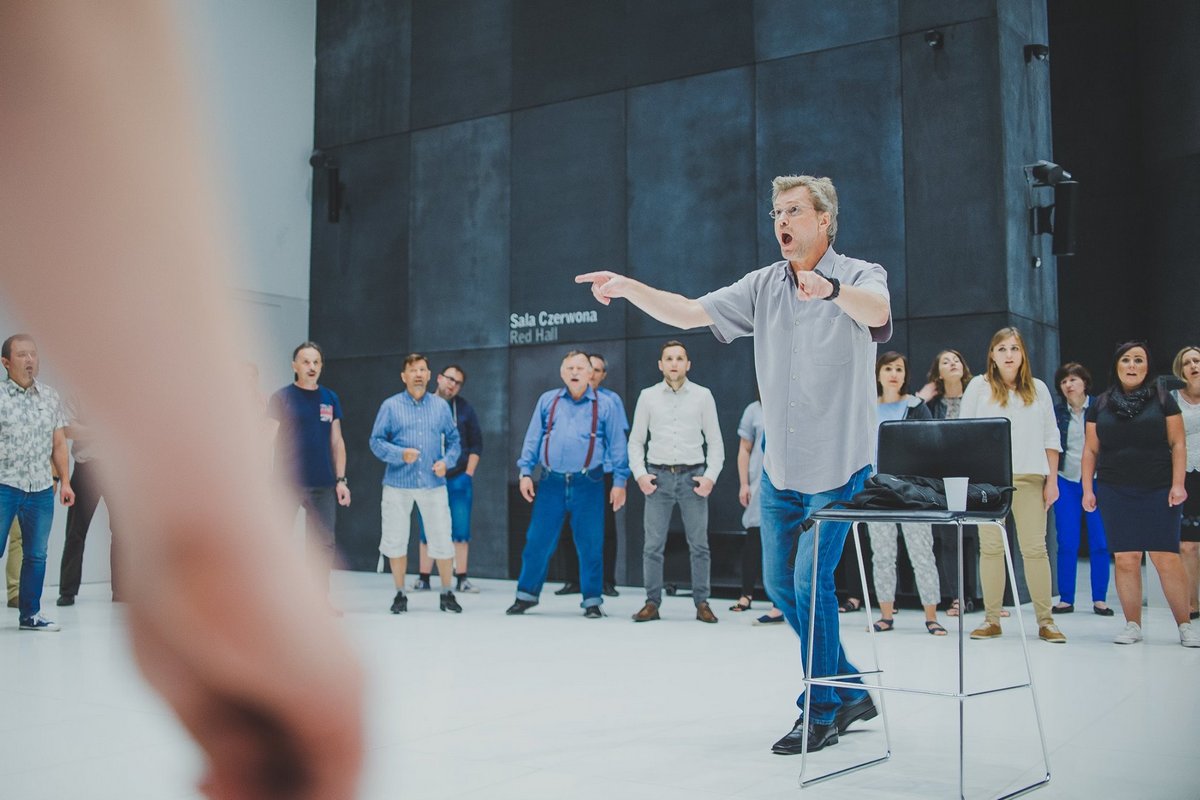
One reason why it took so long is because the project evolved. At first, we just wanted music that choral singers could sing. But then that wasn’t very fun for me because I was hearing a whole different concept in my head, and finally, Bobby’s manager, Linda, agreed: “OK, Roger, just write what you want. We’ll clean up the mess afterwards.” At first we thought it would be a cappella, but then I started adding percussion and strings and synths to the textures, and so it kinda grew into a much bigger concept.
You say this cooperation has changed your life. Bobby’s creative style – his “voice” – influenced me a lot. It influenced what I wrote because it changed my thinking about what good music was. When I started VOCAbuLarieS, I was still really kind of a jazz guy. And even though Bobby has a jazz background, Bobby is not simply a “jazz guy”, even though he’s performed with Chick Corea and other great jazz musicians. Bobby’s a singer, a musician, a one-in-a-million creative, joyful mind. When he expresses himself, it’s not necessarily “jazz.” It’s just music.
Each music style – each dialect – has its clichés, and when I started VOCAbuLarieS, I had a lot of clichés, jazz clichés, in my vocabulary. But being with Bobby on the road started changing my ideas about what “good music” was: I realized I didn’t want to use those clichés. Using clichés is like building a house with nothing but pre-fabricated materials. Now, for me, there’s a way of thinking musically that feels purer to me, like music without an agenda. It seems like some musicians have to prove something when they play… like they have to play fast or complex. It’s so exhausting!
You’ve mentioned being “on the road” with Bobby, what was your role there? Well, I was a member of Voicestra, which was basically a circle song group with 12 singers and Bobby as the leader. I sang bass in that group and I learned a lot because I sang Bobby’s bass-lines… for hours, you know, because the baseline always keeps going when everybody else is doing other stuff. And sometimes Bobby and I would work with a choir or an orchestra with Bobby as the guest artist. I would write music for these concerts, fly in and rehearse the ensemble and then Bobby would come in and we would do a concert.
Talking of being changed by working with Bobby, what have you learned from him specifically? I guess the first thing I learned from him was to clarify and simplify, to get rid of the “noise” in my musical thinking. This gave me room to think more about things like shape, pattern, density, position, direction, balance and clarity, what I call “music by design.” (There’s a whole chapter on Music by Design in my book CircleSongs.) We find these design realities in nature and we end up imitating them in our art. And that’s why I called them “natural design elements.” We develop music that sounds like nature looks. Think about the pattern and symmetry and balance that we have in that natural world. If we apply those same principles to the design of a musical phrase, it usually comes out sounding pretty good!
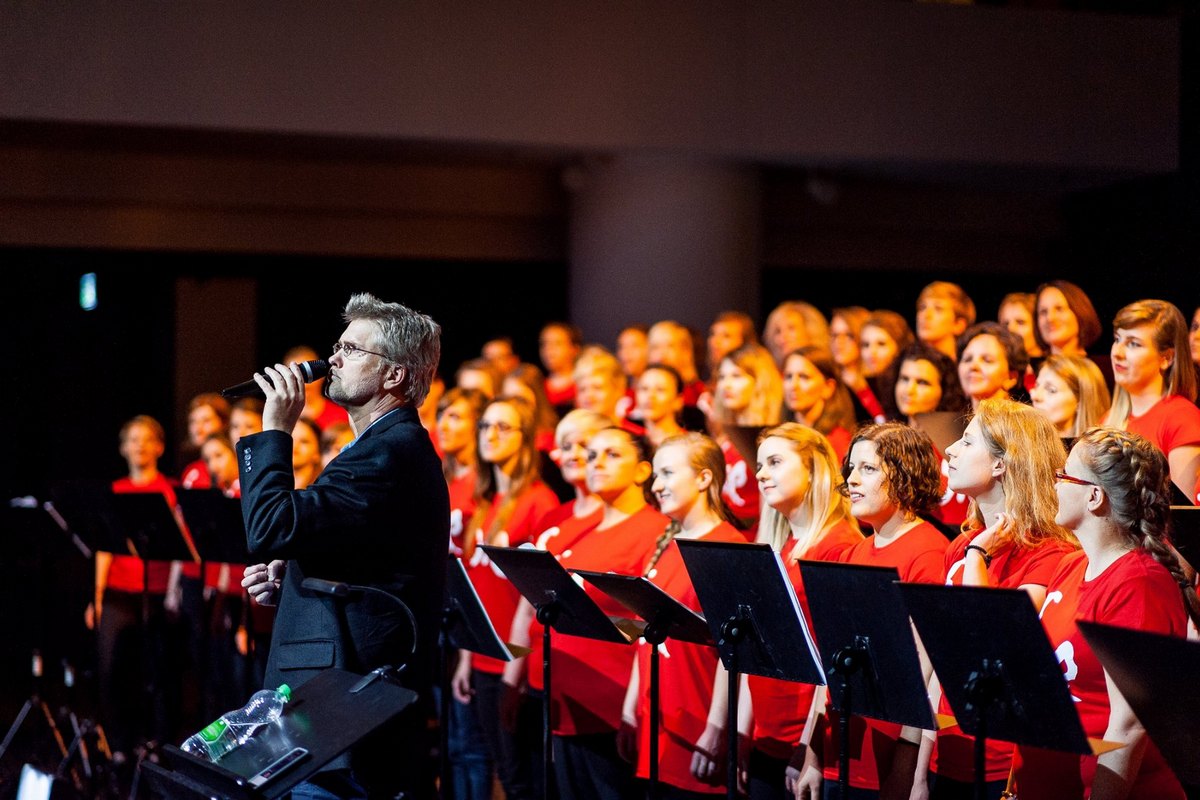
But I would say I didn’t really start to change as a musician until I started practicing these things. I mean, not just write them, but SING them. And it was the practice that changed me. You can be influenced by watching an exercise video or you can be inspired by watching the Olympics, but your body isn’t going to change until you start exercising. I also learned how to improvise – and I don’t mean scat singing. I learned that I have to be committed to the first thing that comes out of my mouth, and then to keep going. Improvisation is forward motion.
So, if I understand it well, you have been a very important, key person for Bobby McFerrin and his mission. Thank you, that’s very kind. I think I’ve continued his work by teaching CircleSinging, and I think I’ve brought my own approach to “improvisation” by teaching Musical Fluency, but there are also many others who have continued his work. Rhiannon, Joey Blake, Dave Worm, and Albert Hera to name just a few, and they’re wonderful singers and teachers.
Bobby’s “mission”, I think, is to just bring the joy of making music, NOW, in this moment, with your voice. I remember he used to say to audiences, “Turn off your televisions and sing.” I think one of the simplest and most valuable “Bobby exercises” is to simply sing for three minutes. Get alone, set your alarm for three minutes, and sing. Sing anything, but, if you can, make it up. It’s difficult to do at first – kind of like prayer! – but eventually it’s joyful and liberating. I think his mission is closely related to this exercise, and I’m so grateful for his influence in my life!
Why do you think the album VOCAbuLarieS is appreciated so highly? What exactly makes it a new standard of choral music? Because it’s classically-constructed music with world-music grooves with some of the best singers on the planet. Now, not every piece is a groove piece, but every piece is developed – I mean the story is developed – using classical compositional techniques. But because these pieces are in different style contexts, they don’t sound like classical choral music. Each piece is a cross-fertilization of musical cultures. Each piece blends – not only in the same song, but in the same phrase, simultaneously – vocal colors from (for example) the Middle-East, Scandinavia, and Europe. It’s what I call “Blue Planet” music … a music brand of mine. Blue Planet is the integration of musical vocabularies from around the world. See, one day, several years ago I was thinking about how the Earth looks blue from far away, the result of all the hues of our planet’s elements blending together. And then I asked myself; from far away, what would the combination of all of the Earth’s musical elements sound like?
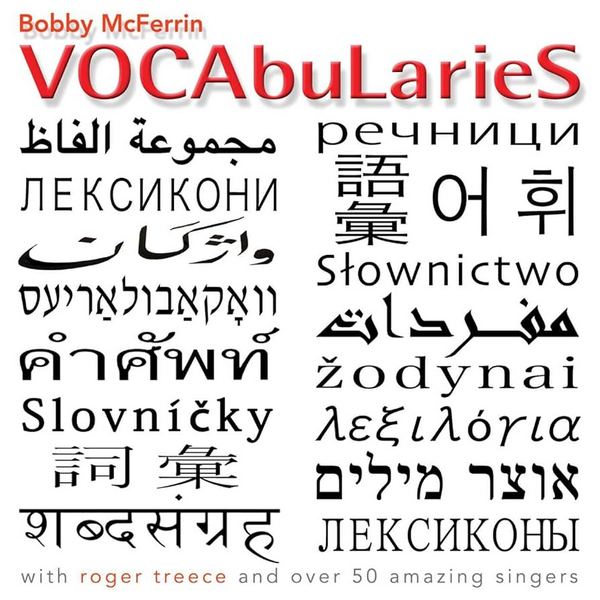 You said, “Each piece is a cross-fertilization of musical cultures …”. Please explain how this worked. We combined traditions of composition, style and vocal performance. In short, we sang classically-constructed music in a non-classical way. OK, to set this up … the dominant classical architecture descends from Europe. Also, our classical traditional choral sound also comes from Europe. So, classical choral pieces kinda sound like other classical choral pieces, because they’re using the same paradigms – or traditions – of composition and choral sound production. Now, let’s imagine something different. Let’s have an entire tenor section that sings and sounds like Salif Keita, a famous African Pop singer. And they’re singing a phrase that’s got rhythms and structure like Orff … but with a groove. And over the top of THAT we have a descant line that’s sung by Scandinavian sopranos. So we’ve blended traditions of composition, style and vocal performance.
You said, “Each piece is a cross-fertilization of musical cultures …”. Please explain how this worked. We combined traditions of composition, style and vocal performance. In short, we sang classically-constructed music in a non-classical way. OK, to set this up … the dominant classical architecture descends from Europe. Also, our classical traditional choral sound also comes from Europe. So, classical choral pieces kinda sound like other classical choral pieces, because they’re using the same paradigms – or traditions – of composition and choral sound production. Now, let’s imagine something different. Let’s have an entire tenor section that sings and sounds like Salif Keita, a famous African Pop singer. And they’re singing a phrase that’s got rhythms and structure like Orff … but with a groove. And over the top of THAT we have a descant line that’s sung by Scandinavian sopranos. So we’ve blended traditions of composition, style and vocal performance.
At the time I started VOCAbuLarieS, I didn’t have this vision, but I discovered it, with the help of a wonderful singer named Lisa Fischer. In the song Messages I had – at first – cast only classical singers. The best soprano of the bunch toured with Philip Glass, so I let her sing the first line of the particular section. She sang it very well, but, as I listened to her tracks, something was missing. Now, in the meantime, I was also working with rock, R&B singer Lisa Fisher on one of the other songs. And so one day, when she was in the studio, I said, “Lisa, why don’t you try this classical song and sing along with this classical singer?” The range of this particular phrase was right around an octave above Middle C to G-flat above that. So Lisa learned this phrase, and then she started singing along with it, following the other Soprano. And then I said: “Lisa, I don’t want you to sing it like they’re singing it. Sing it like YOU would sing it.” And she asked: “Well, is it OK if I belt it?” Oh yeah! And she did, and it did the trick! It was a paradigm-shattering moment. It opened the door to this whole Blue Planet concept. (I hadn’t yet thought of Blue Planet, but this was the beginning.) And it changed my whole concept of how this section – and other songs – needed to sound.
That’s one of the things that makes VOCAbuLarieS so unique: the “world-groove” sections don’t sound like a classical choir or like the Soweto Gospel Choir or Ladysmith Black Mambazo. It’s a real hybrid of different traditions of compositional architecture and vocal sound. It feels like different centuries and different places on the planet somehow integrated together. The word integrate is appropriate, because not every attempt at blending traditions works. One of my teachers, Lyle Mays, first taught me this. Integration has to occur at a deep level, not just the superficial. Let me explain by using an architecture metaphor. Let’s say a builder wants to blend genres, “early American pioneer” with “20th Century Victorian.” And so he builds a log cabin, and then takes porte-cochère off a Victorian house, and attaches it to the front of his log cabin. That’s not integration. That’s superficial.
Another unique element of VOCAbuLarieS was the way I recorded it: one voice at a time, layering one voice 5–10 times. But then I would have 10–15 singers on a song, each layered in this way, so the sound was big! I also added percussion, as an experiment at first, but, as I heard it blend with the voices, I knew the music needed it. It began to evolve away from a “choral album” into sort of a cinematic score. And that makes sense because I’ve always been a kind of a cinematic thinker. I’ve always loved the music of film composers, and I wanted this project to have the drama of a film soundtrack … except that each song has a compositionally-developed storyline, with 60 of the best singers in the world.
One more thing. There’s not an electric bass or drum kit on the entire album. I wanted the grooves to be created by the singers alone, with the percussion merely complementing the voices, not carrying the groove.
So how many years did you spend working on it, half time? Well, I think from the time I started it until the time we finished the final mix, it was eight years.
Incredible. Yes, I know! That’s a long time! It took about two days to record each singer … times 60 singers. And then three hours of editing to every one hour of recording. Each song in the final mix had over 100 tracks of vocals. So that’s about 1500 vocal tracks … for one CD.
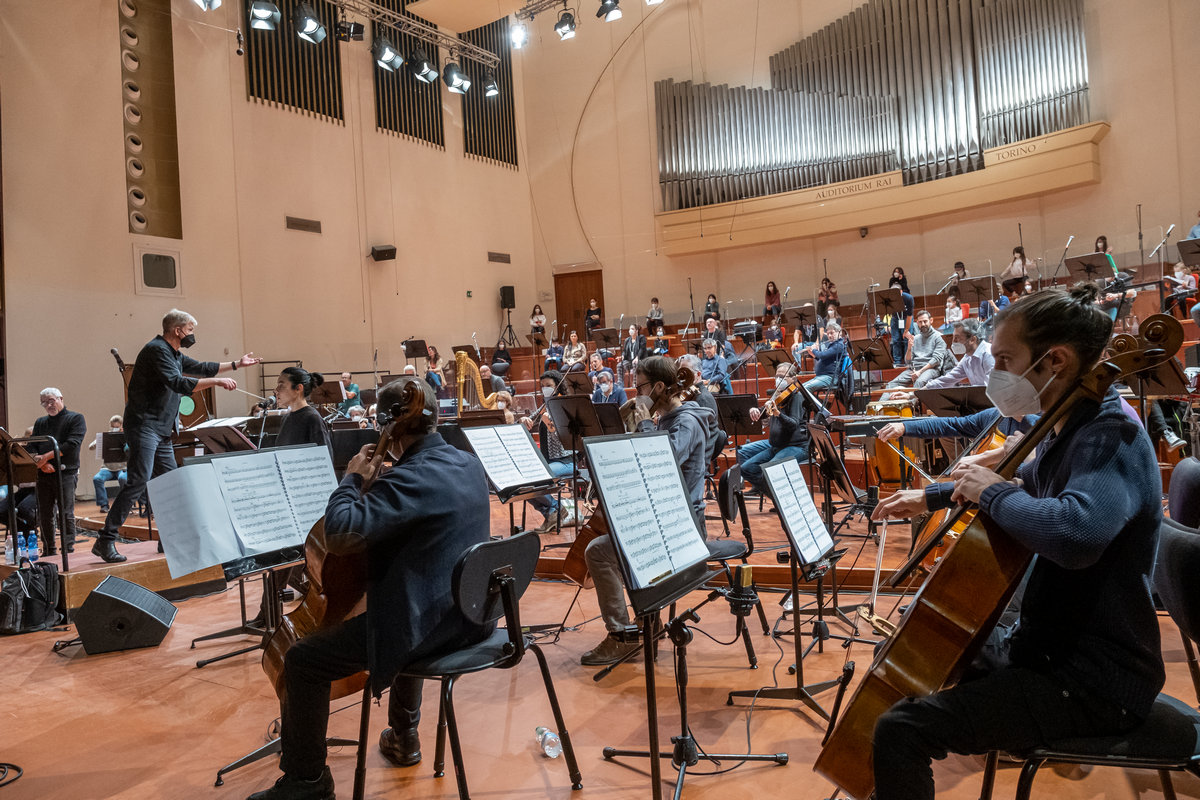
You were talking about casting voices. Can you explain how we decide on five best sopranos out of 100 sopranos you have? Imagine that you need an actor for a certain scene of a film. And maybe this actor is in only one scene, but it’s a very important scene. Like Gary Oldman in True Romance. He’s only in twenty minutes of that movie, but he plays a pivotal part. Same thing with Dennis Hopper and Christopher Walken. They have small roles, but they’re so important. Christopher Walken was probably only in that movie for about five minutes in total, maybe 10 minutes. One scene. But the movie would fall down without that scene. So for instance, at the beginning of Messages, I chose Luciana Sosa, a Brazilian singer. I needed the timbre of her voice on the opening lines. I also knew – from working with her before – that she could be expressive, follow direction and layer her own voice. So I cast her for that line, like a character in a film.
There was another lady named Datevik Hovanesian. She had this wild timbre that reminded me of the Bulgarian women’s choirs. She’s the “real deal”, so I cast her for Wailers. There are simply some kind of timbres that you cannot imitate. Fortunately, in New York, there are a lot of such voices because it’s a melting pot of cultures, so I was able to find singers that could fit and sing through these parts authentically.
So, as a composer, you have a clear idea about the way each composition or each voice, or even each singer’s voice should be performed and the timbre of the voice becomes part of that final composition, is that right? Yes, and that makes me think of something we take for granted in the choral world: before the 21st century, when a choral composer composed choral music, they heard a traditional sort of western European choir in their head. With VOCAbuLarieS, I was not hearing a traditional choir sound in my head. I was hearing many different vocal colors, depending on the song. So, the sonic nature of each song was as unique and important as the music itself.
Thinking about composing, I’ve noticed that you’ve also got awards for music for children. In what ways is this work different? The main difference between composing for children and adults is that I make the music for children a little simpler. So it’s simpler, but not simplistic! My rule is that if it’s not good enough for adults to listen to, then it’s not good enough for children, either. So it’s still good music; it’s just easier to sing. My children’s music falls into two categories. One is for children’s choirs to sing, and the other is to be played for children as entertainment.
For example, I did projects with software companies who were doing music for children’s games. One was an album called Pick Me Up!, for which I wrote music to help people – adults and hearing babies – learn ASL (American Sign Language.) The purpose was to get babies started with linguistic communication at an earlier age, and so they taught them sign language. If the baby had pain then, instead of crying, the baby could do a specific sign to tell the parent that they were in pain. And so then the parent could do something about it. So I co-wrote 20 songs with a lyricist and I produced the music. The lyrics of the songs were simple, but the music production was sophisticated, because the parents needed to like it! We combined a variety of musical styles – ranging from jazz, calypso, and reggae, country, rock, and soul – with authentic instrumentation. It was a fun project!
Apart from natural design, do you have any other source of inspiration when composing? I think inspiration just comes from listening to a lot of music. And so I think the music ends up just kind of bubbling up. I also see pictures in my mind, I sort of hear music for these pictures and things in my mind. I’m often inspired by hearing an instrument or a singer’s voice. I just hear things in my head. Sometimes I’ll just go to the piano and play. I guess I find inspiration anywhere.
As for my favorite composers, I really like so many. I’d say the people who have influenced me the most are the people who really have paid attention to the architecture. It’s mostly been classical and jazz music, people from those traditions. Let’s talk about Pat Metheny and Lyle Mays. They were, you know, considered by some to be pop artists, and even though they come from a jazz tradition, not all of their albums sounded like jazz, right? Very often their music extends these categories in a very significant way. So you know, I love music like that where the architecture itself is important. See, even the Beatles wrote songs that had important architecture to them. There are motifs, sequenced patterns, period forms. A melody like Yesterday is very classical in its structure.
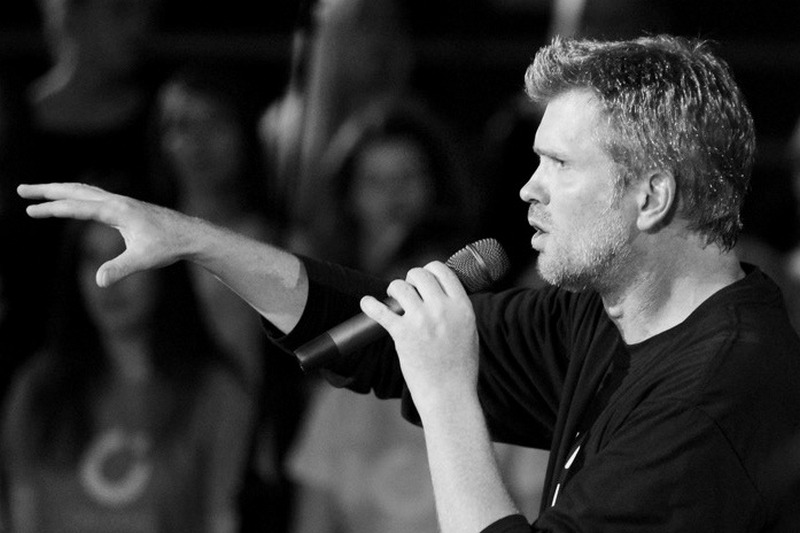
You’ve been nominated for five Grammy Awards and won 14 Downbeat awards as a singer, director and arranger. How important are these awards for you? Have they been important in your professional career? To be nominated for a Grammy is really an honor because your music is actually listened to and discussed among 10–15 of the top professionals in that specific discipline. And Grammy nominations have helped my career because they kind of get me “in the door.” You know, people take you more seriously if you’ve got a bunch of Grammy nominations. And I think it also helps me gauge my own work; I always know that I’ve got the respect of my peers, and that’s encouraging.
What are you working on at the moment? How do you spend your days? Well, I’m developing music, teaching Musical Fluency Zoom lessons to you guys (laughs), I’m producing a couple of CD projects, and I’m working on a rewrite for Musical Fluency. I should also do a rewrite for CircleSongs. I’m developing music for a Blue Planet choir and for a sort of “sequel” to VOCAbuLarieS.
Do you consider recording in a studio again, or getting people really physically together? Both!
You’ve already achieved a lot in the world of music. What now? What would be your ideal vision of a musical future for you? I think to continue the kind of work that I’ve been able to do so far … that is, to work with other great musicians. I remember when I was nominated for my first Grammy, I thought about it, and I realized I wanted to pursue “the cause.” Let me explain. There are causes and then symptoms. A Grammy is a “symptom”, a result. The “cause” is making a great record with other great musicians. So I decided that I wanted to pursue the “cause”, i.e. the collaboration with the best musicians I knew. See, I didn’t just want to go after Grammys or record sales, because then I’d do whatever it takes – including politics – to achieve those things.
But I knew that I wanted to make good music, and so I worked and learned and recorded and learned more, until I finally started to get the attention of some high-profile artists … artists that knew more and were more experienced than myself. You know, it’s like tennis. If I play against people that are better than myself, I’m going to get better! That’s what I want to continue to do.
An interesting and inspiring idea. When I do things that I’m not yet really able to do well, I always learn something. There’s an interesting word I’ve fallen in love with recently: concatenate. It means that things are linked together, like in a chain. I apply it to learning/growing processes, when two different processes feed on each other. So for instance, if I improve my piano technique, I’m going to improvise better (because I’ll be able to play my ideas.) And improvisation will feed my compositional ideas. And because I’ll be able to play better, I’ll be able to transpose, build sequences, modulate, etc. So the process of being a composer and an improvising pianist are concatenated.
I’m working now with two guys from the jazz fusion group, the Yellowjackets, Russell Ferrante and Bob Mintzer. These guys are great musicians, and so I’m learning things and it’s taking the music to a higher level because they’re involved in it. So I want to keep on doing more of that, I want to be able to work with singers and percussionists and other songwriters and musicians from all over the world. I would call that my ideal musical future.
[block background=“#e5e5e5″]Five-time Grammy nominee Roger Treece is a teacher, singer, composer, and producer whose work encompasses classical, jazz, pop, stage and studio, with some of the world’s most popular artists. Mr Treece has produced over 50 albums and collaborated with a wide range of platinum-selling artists, including Josh Groban, Andrew Lloyd Webber, Bobby McFerrin, Katherine McPhee, and Barry Manilow, among others. As a composer, he’s been commissioned by The Chicago Symphony Orchestra, The Danish Radio Symphony, and other symphonic organizations in North America, Europe and Asia, as well as vocal ensembles and choirs, such as The King’s Singers, The Manhattan Transfer and VOCES8.
He has performed and presented workshops at festivals around the world, including the Deutscher Musikrat, the World Choir Games, International Association for Jazz Educators, Jazz at Lincoln Center, the Oregon Bach Festival, Chorus America, Århus International Vocal Festival, Music Educators National Conference, American Choral Directors Association, and the Jazz Education Network. Mr Treece also collaborates with many universities and music institutions in America and Europe on the development of music curricula and music education.
His first book, CircleSongs: A Method for developing Musical Fluency, is the first study method that uses this popular choral improvisational form as a vehicle for training musicians. His second book, Musical Fluency, is a practice method that teaches how to create polyphonic music structures with the voice in real time.[/block]

